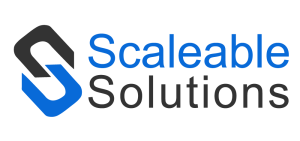Problem:
Hospitals and healthcare systems often struggle with effectively managing their capacity and allocating resources to meet fluctuating patient demand. Unpredictable patient volumes, variations in length of stay, and limited availability of beds, staff, and equipment can lead to bottlenecks, overcrowding, and suboptimal utilization of resources. Traditional approaches to capacity planning and resource management rely on historical data and static models, failing to account for the dynamic nature of healthcare demand. This can result in inefficient operations, increased wait times, and compromised patient outcomes.
Solution:
Our healthcare solutions leverage advanced predictive analytics and automation to enable hospitals and healthcare systems to optimize their capacity planning and resource allocation. By harnessing the power of data-driven insights and intelligent automation, we empower our clients to enhance operational efficiency, improve patient experience, and ensure the optimal utilization of their resources.
- Predictive Demand Forecasting:
Our predictive analytics models analyze historical patient data, demographic trends, and external factors to forecast future patient volumes, acuity levels, and service demands. This enables hospitals to anticipate fluctuations in demand and proactively adjust their capacity and resource allocation accordingly.
- Dynamic Bed Management:
Automated bed management system continuously monitors patient flow, bed availability, and discharge patterns. It uses predictive algorithms to optimize bed assignments, identify potential bottlenecks, and facilitate timely patient transfers and discharges. This ensures that beds are allocated efficiently, reducing wait times and improving patient flow.
- Intelligent Staffing and Scheduling:
By integrating data on patient census, staff availability, and skill sets, our solution generates optimized staffing schedules that align with anticipated demand. The system automatically adjusts shift assignments, overtime requirements, and skill mix to ensure appropriate coverage and minimize burnout among healthcare professionals.
- Supply Chain Optimization:
Our predictive analytics models analyze historical usage patterns, inventory levels, and lead times to forecast the demand for medical supplies, equipment, and pharmaceuticals. This enables hospitals to maintain optimal inventory levels, minimize stockouts, and streamline their supply chain operations, reducing waste and improving cost-efficiency.
- Real-Time Monitoring and Alerts:
Our platform provides real-time dashboards and alerts that monitor key performance indicators related to capacity, resource utilization, and patient flow. This allows hospital administrators and clinical staff to quickly identify and respond to emerging issues, such as surges in patient volume or equipment shortages, enabling proactive decision-making.
- Scenario Planning and Simulation:
Our solution offers advanced simulation capabilities that allow hospitals to model the impact of various scenarios, such as sudden influxes of patients, staffing changes, or equipment failures. This enables healthcare leaders to develop robust contingency plans, test the resilience of their systems, and optimize their resource allocation strategies.
Conclusion
By integrating predictive analytics, automation, and data-driven insights, our healthcare solutions empower hospitals and healthcare systems to enhance their capacity planning and resource allocation. This comprehensive approach enables our clients to anticipate and respond to fluctuations in demand, optimize the utilization of their resources, and deliver superior patient care. By partnering with us, healthcare organizations can unlock the full potential of their operations, improve patient outcomes, and enhance their overall competitiveness in the evolving healthcare landscape.


